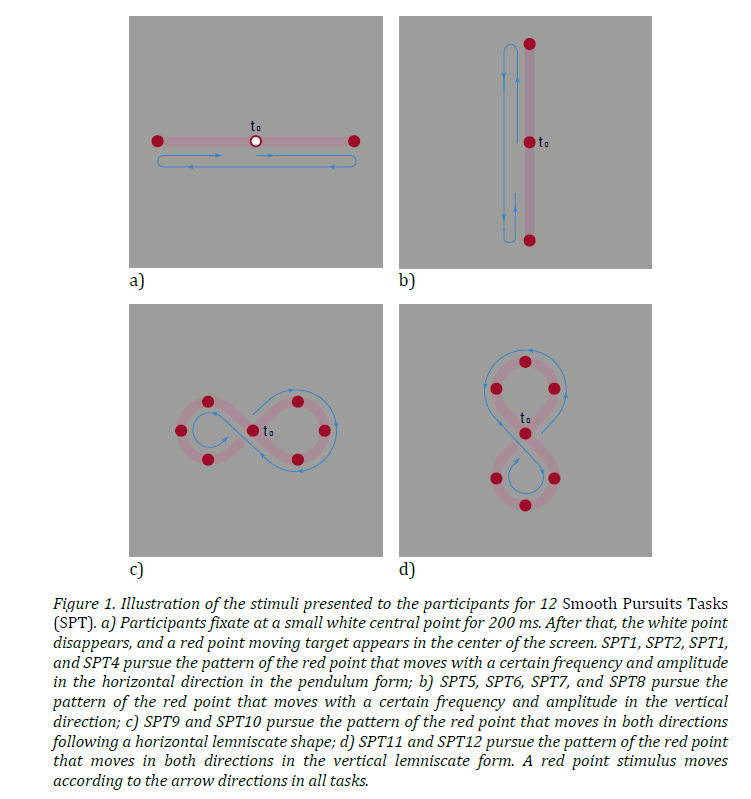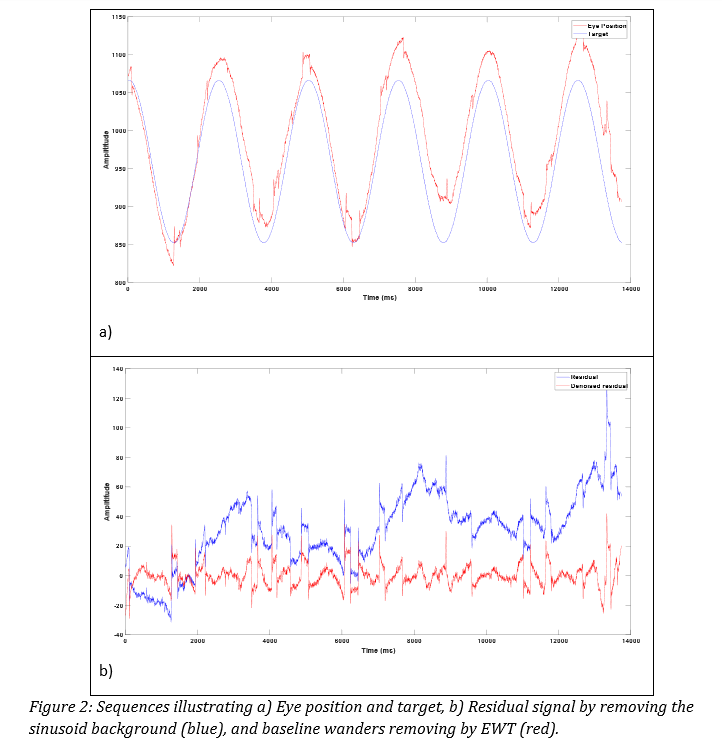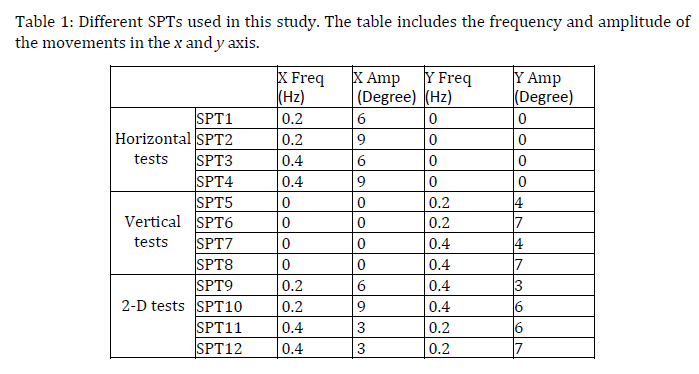Category: Technology
Objective: The present study investigates an automatic method to parameterize smooth pursuit eye movements (SPEM) and to differentiate Parkinson’s disease (PD) from controls using machine learning methods. The automatic parameterization of the SPEM sequences is carried out using digital signal processing techniques.
Background: Prior studies of SPEM of patients with PD have focused only on extracting certain parameters manually and on their statistical analysis. However, there are still no automatic systems capable of detecting PD using SPEM.
Like other biomedical signals, eye movements sequences are derivated of complex nonlinear dynamical systems. According to the theory of complexity loss with aging and disease progression [1], complexity analysis could be used as an indicator of disease to characterize the deviations in that system due to the pathophysiological condition of the patient. Therefore, in this study, a set of complexity features was used to automatically parameterize SPEM sequences and classify PD vs. control groups.
Method: Data were collected using video-based eye tracking. 52 patients and 48 controls (age-matched with patients) were enrolled in the study. The tests were designed to move a target stimulus in the horizontal, vertical, and in both vertical and horizontal dimensions [figure1] [table1].
The eligible signals were extracted by subtracting the sinusoidal fluctuation of the eyes position and removing the baseline by a method based on the empirical wavelet transform [2] [figure 2]. A set of parameters was extracted, namely: parameters describing the system’s dynamics, entropy/regularity-based complexity measures, and self-similarity assessment features. Classification was carried out using a support vector machine.
Results: The results confirmed the existence of chaotic behavior in SPEM signals. The precision of the classification of the PD and control groups was 73.9 % (sensitivity=73.2, specificity=74.5).
Conclusion: The automatic parameterization and the evaluation of SPEM sequences is a potential approach to build automatic decision support tools for PD. This study provides certain evidence about the use of complexity and nonlinear parameters of SPEM as potential biomarkers for PD.
References: 1) A.L. Goldberger, C.-K. Peng, L.A. Lipsitz (2002). What is physiologic complexity and how does it change with aging and disease? Neurobiol Aging, 23 (1), 23-26.
2) Singh, O., & Sunkaria, R. K. (2017). ECG signal denoising via empirical wavelet transform. Australasian physical & engineering sciences in medicine, 40(1), 219–229.
To cite this abstract in AMA style:
M. Bejani, E. Luque-Buzo, J. Gomez-García, A. Burlaka-Petrash, F. Grandas, J. Godino-Llorente. Detection of Parkinson’s Disease by Analysis of Smooth Pursuit Eye Movements and Machine Learning [abstract]. Mov Disord. 2022; 37 (suppl 2). https://www.mdsabstracts.org/abstract/detection-of-parkinsons-disease-by-analysis-of-smooth-pursuit-eye-movements-and-machine-learning/. Accessed December 20, 2025.« Back to 2022 International Congress
MDS Abstracts - https://www.mdsabstracts.org/abstract/detection-of-parkinsons-disease-by-analysis-of-smooth-pursuit-eye-movements-and-machine-learning/



